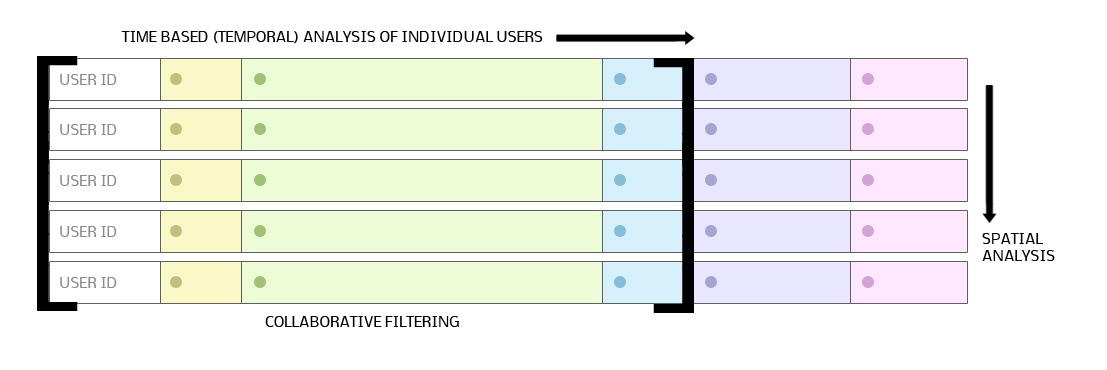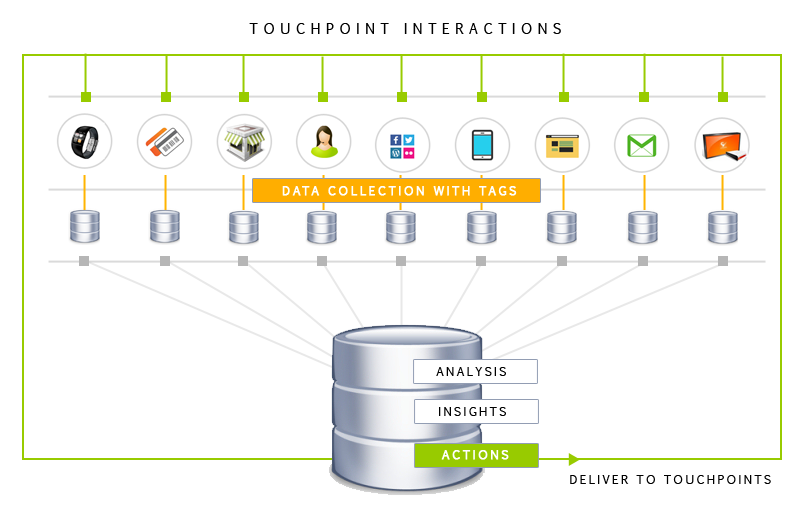Autonomous Customer Engagement can be defined as an engagement (either interactions or conversation) between a customer (human) and a machine. The machine is capable of engaging the customer, just like how human agents do. They create memories and hence can remember past events and co-relate it with current events. They learn, decide, predict and recommend just like the way humans do. And to an extent behave like sales agents, ensuring customer satisfaction, offering better deals and following up on purchases, with a goal to achieve higher customer retention and more revenue per customer.
The post is about how autonomous customer engagement using AI can contribute to more customers, transactions and sales, and how it can be implemented using a simple 3 step process
Our first implementation showed improvement in total number of customers buying a product as well as increase in purchases resulting in higher revenue.

By tracking machine initiated communication and its follow through to purchases helped in measuring the effectiveness of AI driven communication. For example, If a message was initiated because of a certain customer state, and if the customer responded to the message by buying the recommended product in the next 48–72 hrs, we considered such triggers as effective.
Unlike other black box projects, learning was completely transparent. We constantly monitored outputs and were able to track the progress of the engagements. By plotting user’s stage and states, we could easily understand the progress of the users as shown in the illustration below

Implementing a logical transparent AI can be achieved in 3 steps, given that a current customer data is lying in silos and finding it hard to put customer data together
The implementation can be in three parts.
- Data Preparation — where we put customer data together
- Machine Learning Workflow — learn from data patterns
- Engagement Automation — engage based on learning

Data Preparation
The data preparation exercise is to organize customer data by each individual customer. Doing that will allow us easily learn patterns of each individual customer and allows in quickly collaborating with other patterns to arrive at predictions, recommendations and next best actions.
Most enterprises are bogged down by bringing together structured and unstructured customer data. Creating a single customer file from these sources can be a daunting task. To overcome this challenge, we integrated a unique identifier across all unstructured data sources, which made customer data consolidation easier.
Machine Learning Workflow
The second step involves transforming the single customer files to memories, which can be consumed for contextual personalization by any customer touch-point.
Memories are consolidated data files (JSON), which holds key information like patterns, states, aggregated weights and other identifiers to quickly detect and match against user behavior in the current session. These memories are updated in run time, providing the ability to stay relevant and contextual at all times.

Memories when organized together gave us the opportunity to analyze both by individual users as well as their associated users. The individual memory units hold the individual pattern and behavior of a user over time and when each of these units are stacked together, they allow in auto-segmentation by common attributes, or extraction of 2 occurring users in a common namespace or apply collaborative filtering to predict next actions or products

How memories were formed?
The machine learning workflow employs several extraction methods, scoring algorithms and matching techniques to create memories from unified customer data

The Unique Event Extraction lists all events (event detected when a time-stamp is associated)and outputs all the unique events present by converting the unique events to tags (three digit alphanumeric string). The tags are arranged by time stamp, which forms a long pattern of tags
Using the propensity scoring algorithm, the scores assigned to the events were taken to create a unified score for the customer. These scores were derived from two techniques. The unsupervised technique uses reverse goal technique to understand the related events which are closer/farther from a given goal and allocates three staged scores based on their distance.
The State Detection Workflow works on pre-set rules, where they detect for matches within data. For example, if the data contains just an email but no associated transactions then it would tag it as P (for Prospect). In case it finds a linked transaction, it would update the state to C (for Customer). Likewise, it detects product states, response states, sentiment states to add up to customer memory.
Intent Scoring Workflow would calculate the intent of a customer against a particular product from total unique events, total sessions, scores of the unique events, which is further computed with negative scores assigned to recency to get the final intent score
Sentiment Scoring Workflow considers customer conversations, replies recorded as text or voice (converted to text) to rank and generate sentiment states (positive, negative, neutral, ambiguous)which is tagged to the customer against a related product
NER workflow seeks to locate and classify named entities in text into pre-defined categories such as the names of persons, organizations, locations, expressions of times, quantities, monetary values percentages, etc.
Using these individual patterns, a workflow compares patterns to identity similar users and extract products that can be recommended. A corresponding workflow extracts the probability of a user achieving their goal and the most-probable-next-action that leads to a goal.
All the above workflows outputs to a common user memory, defined as customer memories
Engagement Automation
The third step was to integrate the memories to the engagement workflows. Workflows would initiate whenever there is a change in net-weight of the unified customer score, which updates the designated customer state to true.
The initiated workflow would populate the dynamic template with inputs from the memory file, hence personalizing the triggered communication. Tags embedded into these communication help in collecting interaction responses of the customer. These interaction responses are integrated back into the ML workflow to compute the new scores with the aggregated score to achieve the new unified score. The ML workflow scores and readjusts its decision states, enabling continuous learning and decision fine-tuning for best results.
Response tracking also allowed in prioritizing the most active channel for a particular customer, to ensure higher open rate.
The Plumb5 Engagement Layer was integrated to 10 different channels covering Ecommerce Store, Offline Stores (POS Systems), Mobile App for commerce and beacon based store personalization, Social Inbox, Email, SMS, Browser Notifications, Outbound Callers, Call Center Application and Onsite Chat.

Engagement data was optimized to minimal parameters so that it reduces the information extraction workload on the engagement layer.
You can check the deck below for a more elaborate showcase of the implementation steps.
